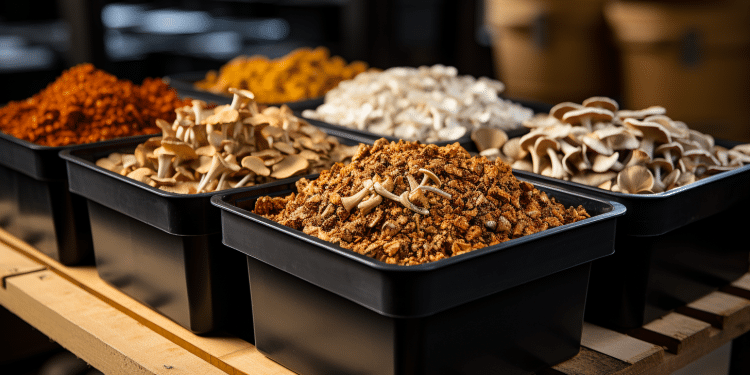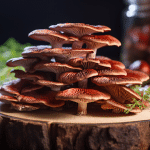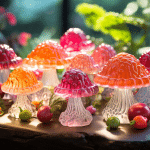Bulk substrates are lightly nutritious materials used in the production of large-scale mushrooms. Bulk substrates are typically used with pre-colonized granular grain spawn growth substrate. This spawn is then used to inoculate the bulk substrate. The recommended ratio of how much spawn to substrate is generally no less than 20% (1 part spawn to 4 parts substrate).
Typical Types of Substrates
- Manure (cow, horse, etc.)
- Straw
- Worm castings
- Compost
- Coconut fibre: the shredded fibre from the husks of coconuts. It holds several times its weight in water, yet it does not break down over years. It is pH-neutral and it is cheap. Hydroponics stores and hardware stores carry it in squeezed/compressed bales, while pet stores carry it in dried bricks.
Learn more: Growing mushrooms on sawdust
Creating Grain Spawn from Scratch
Bulk substrates cannot be inoculated with liquid cultures or spore solutions, and therefore, one of the first steps of a bulk growing operation is the creation of granular cultures for the purpose of inoculating bulk substrates.
Learn more: How to build a mushroom fruiting chamber
Once your grain spawn is completely inoculated, it is ready to spawn on your bulk substrate (note the word spawn is used as a noun when it is talking about a grain being colonized, but it is also used as a verb when talking about mixing it in with the bulk substrate).
Step 1: Place the pasteurized substrate into the container where you will be mixing with your spawn. This could be your intended spawning chamber, another big plastic jar, or even a bag that holds your pasteurized substrate.
Step 2: Shake a seeding container to dislodge colonized grains, which are no longer clumps.
Step 3: Mix the spawn into the substrate as evenly as possible. If spawn is not spread evenly throughout the substrate, the colonization of the mass substrate can be irregular, which can make colonization more prolonged, thereby giving the mycelium more time to grow.
Step 4: Place the substrate into the fruiting chamber, placed in an area that’s dark which enables it to colonize. Depending on how much spawn is used, it can take anywhere from 5 days to 2 weeks for it to colonize. The more spawn used, the faster bulk substrates colonize. The recommended ratio of how much spawn to substrate is generally no less than 20% (1 part spawn to 4 parts substrate).















